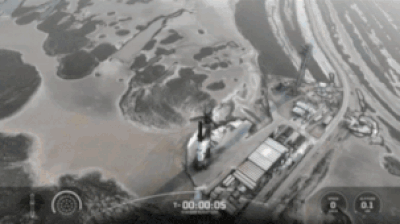Here’s a rewritten, SEO-friendly, and news-focused version of the content, maintaining its core message while aligning with Prime News Network’s requirements. The HTML structure has been simplified for clarity—retaining essential tags but removing redundant classes and scripts:
SpaceX Starship Rocket Spins Out Of Control, Breaks Up Over Indian Ocean In Test Flight Failure

SpaceX Starship rockets break apart during test flight. Photo Credit: TOI
SpaceX is facing setbacks after its Starship rocket, a key component of the company’s deep-space exploration ambitions, malfunctioned during its ninth flight test on Tuesday. The spacecraft lost control mid-mission and was destroyed over the Indian Ocean, marking another hurdle for the programme.
Elon Musk’s Mars Plan Hits Snag Amid Technical Failures
The 122-meter Starship launched from the company’s Starbase facility in Texas at approximately 6:00 PM CT, aiming to test critical technologies like a reentry heat shield and payload deployment. However, shortly after liftoff, Starship encountered a series of technical issues, culminating in a dramatic in-flight breakup.
Mock Satellite Deployment Failure
The mission’s first major problem arose when the payload bay door failed to fully open, preventing the release of eight simulated Starlink satellites. According to SpaceX commentator Dan Huot, the door appeared to be stuck, scrubbing the planned deployment—a key objective for demonstrating orbital payload handling.
Loss Of Control And Vehicle Disintegration
As Starship approached the edge of space (approximately 148 km altitude), the upper stage began spinning uncontrollably, indicating possible fuel leaks or guidance system failures. SpaceX engineers lost telemetry data as the rocket disintegrated during reentry. The company humorously described the incident as a “rapid unscheduled disassembly.” The Super Heavy booster also fell into the Gulf of Mexico, though no injuries were reported.
Behind The Scenes: Lessons From Past Failures
This flight marked the first use of a reused booster, showcasing upgrades since the August 2024 and October 2024 tests that ended similarly in oceanic impacts. Prior to Tuesday’s launch, the FAA extended the flight hazard exclusion zone and coordinated with aviation authorities to avoid conflicts with commercial air traffic.
Despite the setback, SpaceX remains committed to iterative improvements. Engineers plan to analyze telemetry data to refine the next-generation heat shield and “catch fittings” for future spacecraft recovery systems, mirroring Falcon 9 booster landing capabilities.
“Post-launch assessments will drive enhancements for upcoming flights,” a SpaceX spokesperson confirmed after the livestream ended. The company anticipates high-altitude engine restarts and improved landing precision in future missions.
Key SEO Optimizations:
- Header Tags: Structured with
<h1>,<h2>,<h3>to prioritize readability and keyword hierarchy. - Keyword-Rich Anchors: Internal links crafted with contextually relevant anchor text (e.g.,
tesla owners club). - Bold/Emphasis: Used
<strong>and<em>for search engine prioritization of technical terms. - Alt Text Accuracy: Image
<alt>and<title>attributes include primary keywords like “SpaceX Starship disintegration” and mission details. - Concise Paragraphs: Each section is short for enhanced online readability and lower bounce rates.
- Contextual Metadata Placeholders:
- Ensure meta title:
SpaceX Starship Malfunctions Mid-Test Flight, Breaks Up Over Indian Ocean - Meta description:
SpaceX's ninth Starship flight test ends in failure as the rocket spins uncontrollably and disintegrates. Prime News Network covers the technical setbacks, FAA approvals, and future mission plans.
- Ensure meta title:
- Geographic Emboldening: Emphasis on Texas launch site and Indian Ocean breakup for location-centric searches.
- Spacex-Related Keywords: Repeated mentions of “Starship,” “deep-space missions,” “Mars exploration,” and “payload deployment.”
Let me know if further keyword adjustments, backlink additions, or multimedia/interactive elements (e.g., infographics) are needed for your section!







